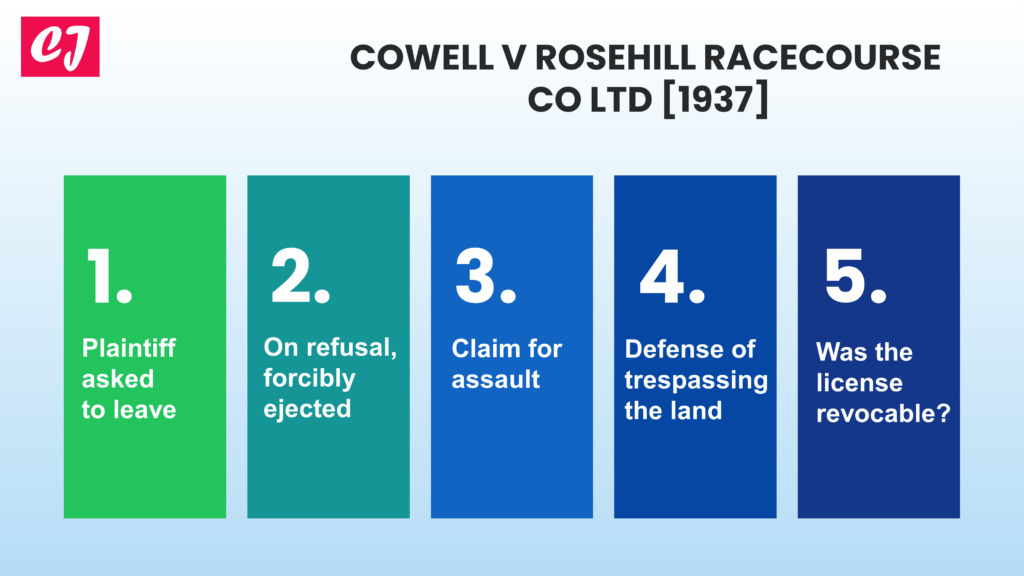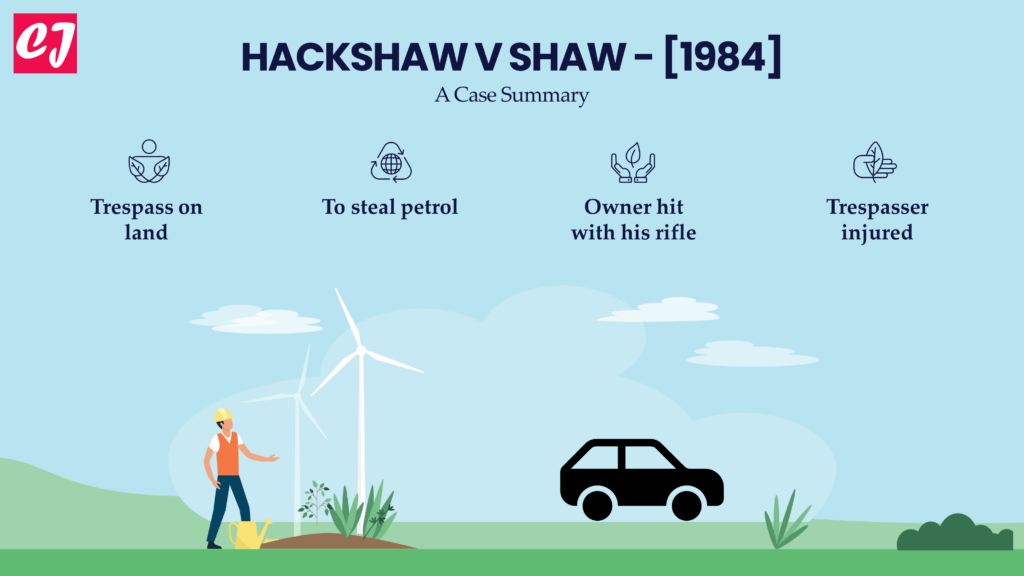
A Summary of Halliday v Nevill (1984)
Case name & citation: Halliday v Nevill [1984] HCA 80; (1984) 155 CLR 1
- The concerned Court: High Court of Australia
- Decided on: 06 December 1984
- The bench of judges: Gibbs C.J., Mason, Wilson, Brennan and Deane JJ.
- Area of law: Trespass to land; Lawfulness of arrest; Access to premises
Facts of Halliday v Nevill
This is an appeal case originating from a decision by Brooking J. of the Supreme Court of Victoria. Brooking J. ordered to review decisions made by a Stipendiary Magistrate of dismissing charges against the appellant.
The charges concern an incident in West Heidelberg when two police officers on a motorized patrol, observed the appellant reversing a car out of a driveway at 375 Liberty Parade. One of the officers knew him to be a disqualified driver. When the appellant saw the police car coming, he drove back into the driveway. The police officers entered the premises at 375 Liberty Parade and arrested the appellant for driving while disqualified from obtaining a license and for driving while he had been drunk. When the appellant was being taken by the police, he suddenly ran away into his own home at number 370. The police officers pursued him into the house and a scuffle ensued. Charges of assault and of resisting the police were also imposed.
Initial decisions
The Magistrate decided that the arrest of the appellant in the driveway of 375 Liberty Parade was not lawful as the police officer arresting him was considered to be a trespasser on those premises. Hence, the Magistrate dismissed the charges against the appellant.
On the other hand, Brooking J. concluded that despite the possibility that the police officer arresting the appellant was a trespasser on the premises at 375 Liberty Parade, the arrest itself was lawful. Further, the act of the appellant breaking away from the police constituted an escape from lawful custody. Brooking J. also found that the entry of the police officers into the appellant’s home at 370 Liberty Parade in pursuit of him was authorized by s.459A of the Crimes Act 1958.
Issue
The appellant’s counsel raised many issues concerning this case. The central issue for the appeal’s outcome depended on whether the police constable was a trespasser when he arrested the appellant in the driveway of 375 Liberty Parade.
Court’s judgment in Halliday v Nevill
Based on available evidence, the majority of the Court concluded that as a matter of law, the police constable had an implied license from the occupier of the premises to be on the driveway.
In this regard, the Court gave the following example:
“The most common instance …… If the path or driveway leading to the entrance of such a dwelling is left unobstructed and with the entrance gate unlocked and there is no notice or other indication that entry by visitors generally or particularly designated visitors is forbidden or unauthorized, the law will imply a license in favor of any member of the public to go upon the path or driveway to the entrance of the dwelling for the purpose of lawful communication with, or delivery to, any person in the house.
Such an implied or tacit license can be precluded or at any time revoked by express or implied refusal or withdrawal of it.
The occupier will not however be heard to say that while he or she had neither done nor said anything to negate or revoke any such license, it should not be implied because subjectively he or she had not intended to give it.”
Conclusion
The Court said that there were no indications that the driveway of 375 Liberty Parade was locked, closed, or had any notice forbidding entry. Therefore, various individuals with legitimate purposes had, as a matter of law, an implied license from the occupier of the premises to access the driveway. Based on common sense and public policy, the Court considered that this license was not only confined to the general public. A member of the police also had an implied license to go to the driveway in the ordinary course of his duty to question or arrest a trespasser or a lawful visitor upon it.
Since there were no indications that the occupier had taken any actions to negate or revoke any implied license, the police officer was deemed to be lawfully on the driveway of 375 Liberty Parade when he arrested the appellant.
Consequently, the appeal was dismissed.
One might note that Justice Brennan dissented from this view and had a different opinion on the matter.
Read the full text of the case: https://jade.io/article/67165
You might also like:
More from tort law:

